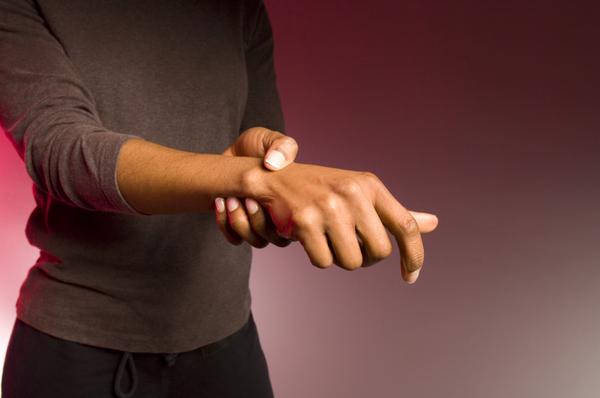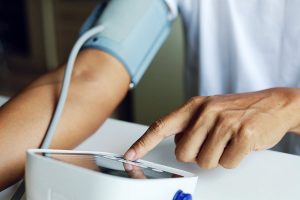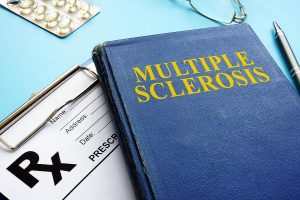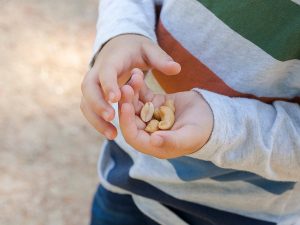About 2 weeks post-partum, I felt a sharp pain in my right wrist. It was particularly painful when I picked up my newborn or held him to feed. Because I had carpal tunnel in both of my hands during pregnancy, I just assumed that this was spill-over from it and believed, like everyone told me, that it would subside soon after delivery. So I left it untreated. But with each day, the pain got worse, and I began compensating by using my left hand more. Soon, the same pain started in my left wrist. I was in tremendous amounts of pain — to the point where I felt like I could no longer safely hold our baby because my wrists felt so weak and unstable. While the physical pain was excruciating, the emotional pain caused by thoughts of not being able to hold and care for my newborn was far worse. There were so many moments when I felt hopeless and wondered if I was ever going to be able to hold my baby again. So I sought help. Still thinking it was related to carpal tunnel, I went to physical therapy but that didn’t make much of a difference. So finally, I went to a hand specialist and it was then, about 5 weeks post-partum, that I was officially diagnosed with De Quervain’s Tenosynovitis aka “Mommy’s Thumb” or “Texting Thumb.”
De Quervain’s (sounds like an apropos name for a line of luxury handbags, right?), in a nutshell, is an inflammation of the tendons that extend from the thumb to the wrist. When the swollen tendons and their sheaths rub against the narrow tunnel through which they pass, pain and tenderness is felt on the thumb side of the wrist.
Symptoms include:
- Pain over the thumb side of the wrist, near the base of the thumb
- Swelling over the thumb side of the wrist, also near the base of the thumb. There may or may not be a fluid-like cyst in the region
- A “catching” or “snapping” sensation when moving the thumb
- Difficulty moving your thumb and wrist when performing movements that involve pinching, grasping or twisting
In my case, my pain was centrally located on the wrist bone, and there was definitely the feeling that my tendons were “snapping” when I moved my thumbs a certain way.
Upon diagnosis, the doctor offered the following treatment options:
- Immobilize the area by wearing a splint 24 hours a day for a four to six week period
- Cortisone shots to reduce the swelling of the tendon
- Working with an occupational physical therapist
- Surgery, which involves cutting open the sheath to release pressure on the swollen tendon
Most of these weren’t feasible with a newborn. And while the cortisone shot was tempting, I wasn’t comfortable getting steroid injections while breastfeeding. This was purely preferential — much like eating sushi during pregnancy. Some women refuse to do it, while others “don’t see the big deal.”
By 12 weeks post-partum, with a 3-month-old baby, my hands were getting weaker. As a last-ditch effort before calling the doctor’s office to schedule the shot, we found videos online showing different exercises for De Quervain’s. I was skeptical, but I did the stretches anyway. And lo and behold, after a couple of weeks, I began to feel relief! I iced my wrists and slept in braces at night too — so I’m sure the combination of all three helped.
I continued with the exercises and my wrists felt stronger. Now, at 5 months post-partum, I’ll still feel occasional pain when I move my hands in a certain way, but those moments are few and far between. And whenever I feel pain again, I simply do some of stretches and the pain seems to go away.
So, if you’re a breastfeeding mom who has De Quervain’s and want to avoid the cortisone shot, try my strategy first and hopefully you’ll find some relief too:
- Ice whenever possible. I bought these ice packs made especially for wrists and ankles on Amazon
- Wear braces. (I wore them while sleeping, driving and anytime I wasn’t holding the baby). Make sure that the brace is the kind that covers your entire thumb and wrist. A thumb splint or wrist splint is not enough to support both. I bought mine off amazon too
- Hand/wrist stretches and exercises. This one’s helpful, and so is this one:
Lastly, try to take breaks when holding the baby. Having gone through it, I know that’s easier said than done, but just be cognizant of taking it easy so that you don’t make the matter worse (which could then definitely require surgery). And if in doubt, always consult your doctor.
If you have, or have had, De Quervain’s, I would love to hear your story. And if have any additional tips on how you deal with the pain, please share it with us in the comments section!



















After having my baby, I too had De Quervain. I also did all of the above and the pain never went away. When I was seeing an occupational therapist, my arms were so inflamed, therapy made them worse. Ironically, one of the therapists believed in acupuncture to treat all kinds of ailments. He recommended that I go to one. I was reluctant at first but the pain was so severe that I decided I would give it a try. After a few sessions with the acupuncturist, the pain was gone! I am a true believer in it now! Going forward, I make sure to take breaks (especially at the computer) and do some exercises for my hands to make sure I don’t aggravate the tendons again. I hope this helps!